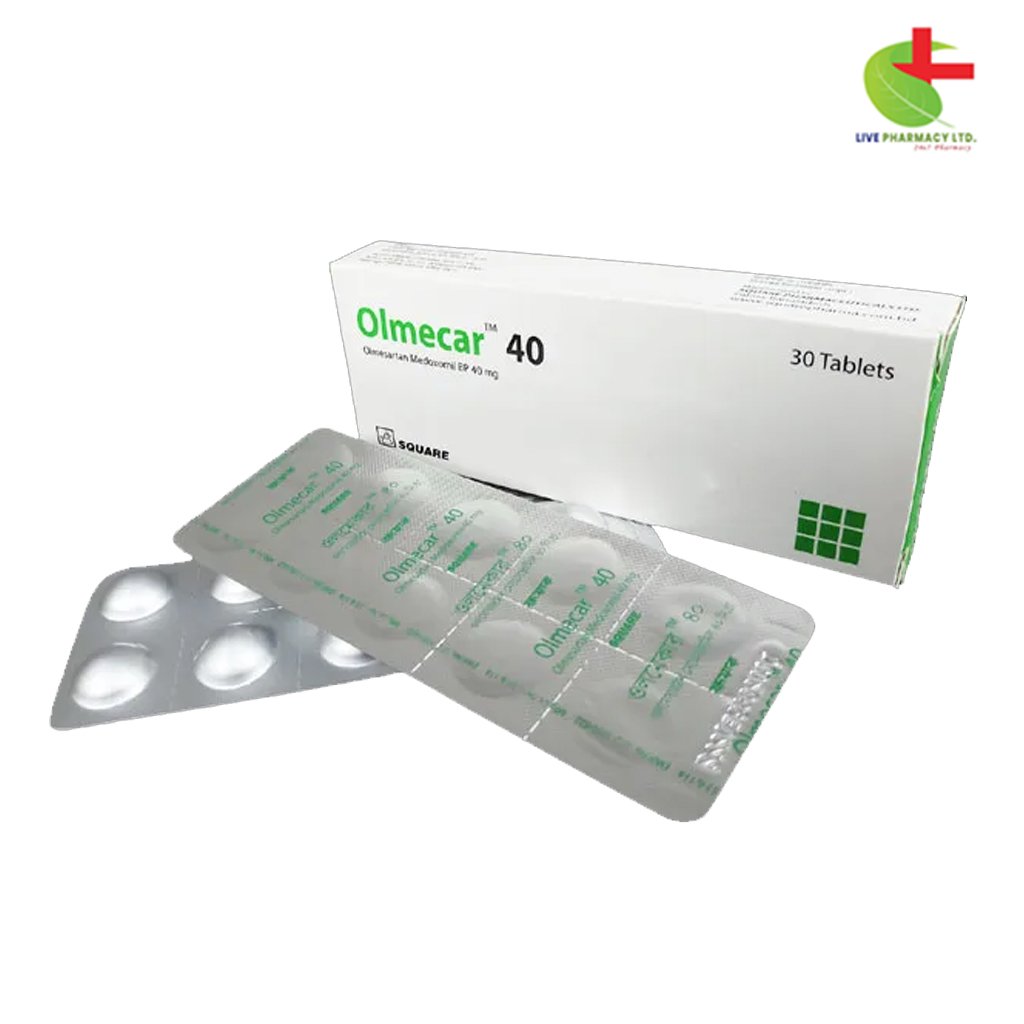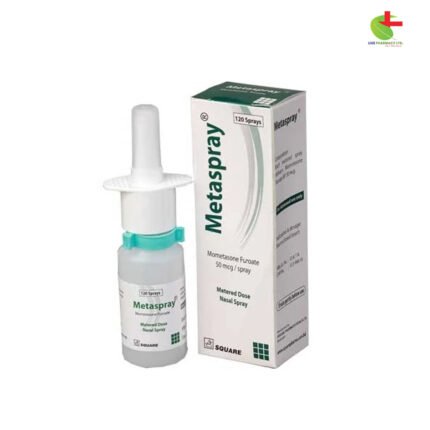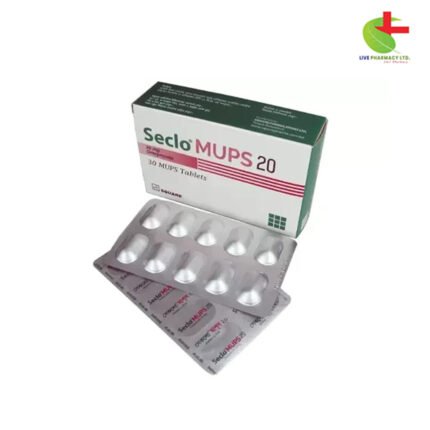Olmecar 40
180.00৳ Strip
- Introducing Olmecar, a trusted hypertension management medication.
- Contains Olmesartan to effectively lower blood pressure by blocking angiotensin II receptors.
- Tailored dosing ensures personalized treatment with minimal risk of adverse reactions.
- Trust Olmecar for reliable blood pressure control and enhanced cardiovascular health.
 Brand
Brand
|
Square Pharmaceuticals PLC |
|---|---|
 Generics
Generics
|
Olmesartan Medoxomil |
Indications
Olmecar is prescribed for managing hypertension, either on its own or alongside other antihypertensive medications.
Pharmacology
Angiotensin II, a key component of the renin-angiotensin system, exerts vasoconstrictive effects and influences aldosterone synthesis. Olmesartan, by selectively blocking the AT 1 receptor, counteracts the vasoconstrictor actions of angiotensin II. It has a significantly higher affinity for the AT 1 receptor compared to the AT 2 receptor. Olmesartan does not inhibit ACE, thus leaving the response to bradykinin unaffected. Although it leads to increased plasma renin activity, this doesn’t negate its blood pressure-lowering effects.
Dosage & Administration
Dosage should be tailored to each individual. Typically, Olmesartan is initiated at 20 mg once daily for non-volume-contracted patients. If further blood pressure reduction is needed after two weeks, the dosage may be increased to 40 mg. There’s no added benefit in splitting the dose into twice daily.
No initial dosage adjustments are necessary for elderly patients or those with moderate to severe renal or hepatic impairment. For patients at risk of intravascular volume depletion, initiating Olmesartan requires close monitoring and possibly starting with a lower dose. Olmesartan can be taken with or without food.
Pediatric Use
The safety and efficacy of Olmesartan in children haven’t been established.
Interactions
Olmecar doesn’t significantly interact with drugs like digoxin or warfarin. Antacids don’t affect olmesartan’s bioavailability. Since it doesn’t metabolize through the cytochrome P450 system, interactions with drugs that affect these enzymes aren’t expected. However, caution is advised when co-administering Olmecar with NSAIDs, as it may lead to renal function impairment.
Contraindications
Olmecar should not be used in individuals with hypersensitivity to any of its components.
Side Effects
In clinical trials, adverse reactions to Olmecar were comparable to placebo. The most common adverse reaction was dizziness. Other reactions occurred but at similar rates in placebo groups.
Pregnancy & Lactation
Discontinue Olmesartan immediately upon pregnancy detection due to the risk of fetal harm, especially in the second and third trimesters. Its excretion in human milk is unknown, but it’s secreted in low concentrations in rat milk. Breastfeeding while on Olmesartan requires careful consideration.
Precautions & Warnings
Patients on Olmecar, especially those with severe congestive heart failure, may experience changes in renal function. Caution is advised, as it may lead to oliguria, azotemia, acute renal failure, or death.
Overdose Effects
Overdosing on Olmecar may lead to hypotension and tachycardia. Supportive cardiovascular care is crucial in managing clinically significant hypotension.
Therapeutic Class
Olmecar belongs to the class of angiotensin II receptor blockers.
Storage Conditions
Store Olmecar in a cool, dry place below 30ºC, protected from light and moisture, and out of children’s reach.
Chemical Structure
Molecular Formula: C29H30N6O6 Chemical Structure: Olmesartan Medoxomil’s chemical structure.
Common Questions about Olmecar 40 mg Tablet
- Uses: Olmecar 40 mg Tablet is prescribed for hypertension.
- Time to see improvement: Typically within 1 day to 1 week.
- Frequency: Usually once or twice daily, depending on the individual’s condition.
- Administration: Oral intake, preferably with food to avoid stomach upset.
- Storage and Disposal: Store at room temperature, away from heat and light, and keep out of children’s reach.
Quick Tips
- Take Olmecar consistently at the same time daily.
- Be cautious of initial dizziness.
- Regularly monitor urea, creatinine, and potassium levels.
- Avoid NSAIDs without consulting your doctor.
- Be mindful of potassium-rich foods and supplements.
- Don’t use Olmecar during pregnancy or breastfeeding.
- Consult your doctor before discontinuing the medication abruptly.













Reviews
There are no reviews yet.